Written by Patrick Boots and designed by Jonathan Kopeliovich
A dynamic shift in the media landscape shone through in the 80s, with FM radio emerging as a true powerhouse. The 1980s were a time of maturity for WHUS, with improvements in technology and increased access to radio helping drive up listenership and support for the station. 1980 was also when our current Chief Engineer, John Zatowski, joined! Thank you, JZ, for making sure our station doesn’t explode.
Radiothon
1980: We hold our first Radiothon! Radiothon was a way to raise support for the station outside of student fees. Every March, DJs would gather at WHUS and clutch at the phones, while live music and insanity reigned in the background. Callers would call and pledge a certain amount of money for premiums. Premiums are special gifts, such as concert tickets or T-shirts. offered by the radio station.
We climbed from $13,5000 in pledges to our peak in the early 1990s, when we surpassed $38,000.
“A Week in Hell: Radiothon 1992”
In 1992, Jazz Officer Spaak filmed and directed a feature-length film documenting what Radiothon is really like. Watch below.
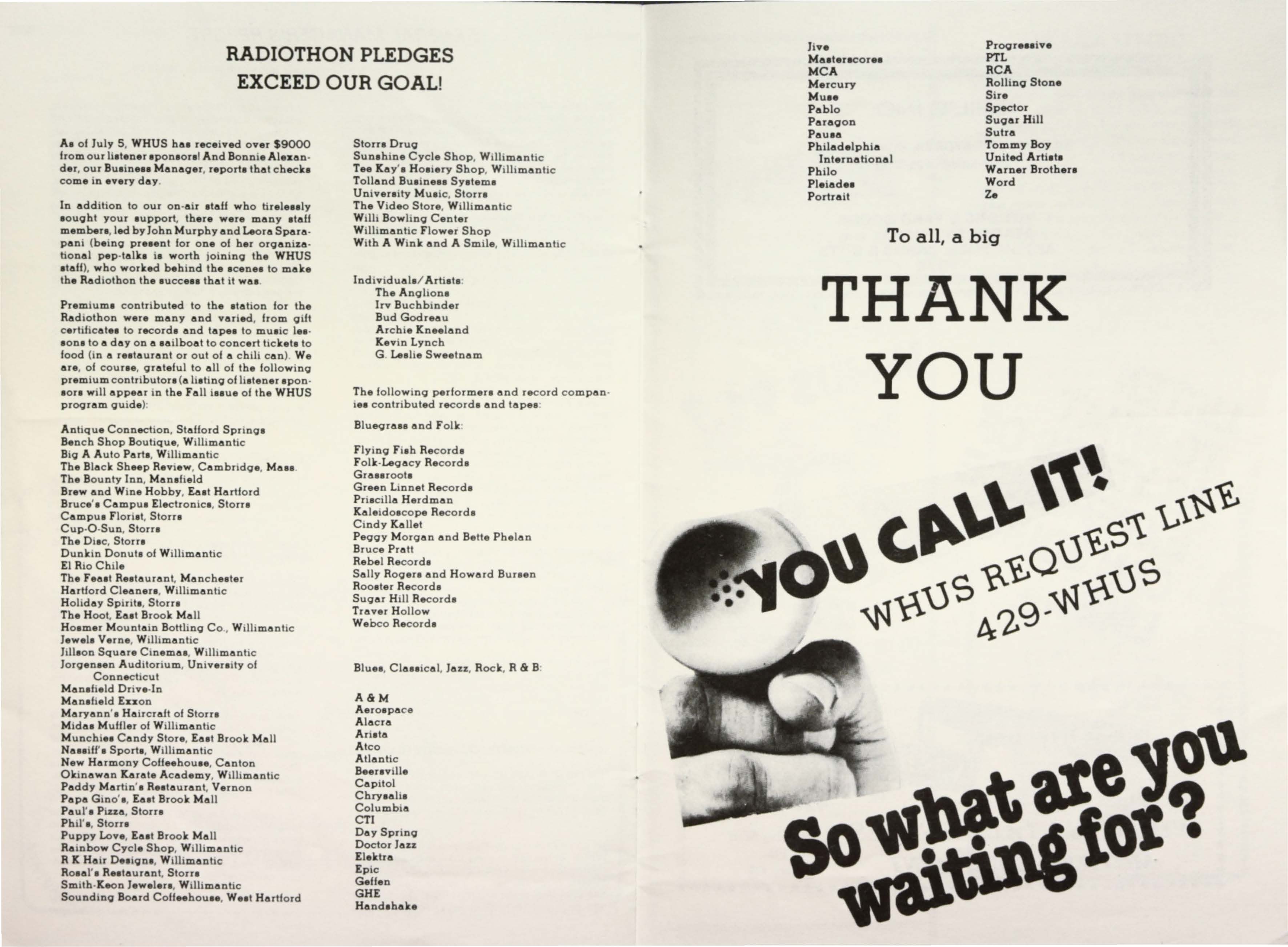

By 1983, we had raised $10,700 in pledges.

“The most notable event on last year’s radiothon was the destruction of Journey’s album Radio Days over the air in return for pledges. Or, as Kevin Kraynick, Music and program director put it, “We drilled it, Smashed it, stapled it, gouged it with a pen, and threw’ it against the wall.””
From the same article, written by Janet Leahy.
Fee Increases and Financial Troubles
In Spring 1986, WHUS asked the UConn student body to approve an increase in their student activity fee from $2 to $5 per semester. The referendum was approved and the necessary funding to renovate the WHUS studios and replace aging equipment from the 1950s was acquired.

Throughout 1987, major improvements such as the replacement of soundproofing material and installation of stereo and four-track recording equipment meant WHUS could produce a higher quality sound. For the first time, remote news and sports broadcasts were possible, and multitrack music production from live musicians went out on the air.


WHUS also entered an arrangement with the Associated Press, a news wire service. News content from around the country, sports scores, and the ability to share stories, enhanced WHUS public affairs programming.
Short explanation of teletype
Wire services like the AP used teletype, and later teleprint, machines which sent information over telegraph or telephone networks to be immediately printed onto paper. A bell or flashing light indicated the type and time sensitivity of the news being sent “down the wire” – Breaking news stories were often called “rip and reads”, because the announcer on-duty would just tear off the paper and inform the public of the news. As time went on, wire services integrated into computer word processors and newsroom “feeds”, or continual streams of news and information.
In 1988, WHUS installed a shortwave listening station, which implemented the possibility of reporting on world news. Shortwave broadcasts travel farther distances than AM (mediumwave) or FM, making them ideal for international communication and information.
The improved sound and renewed interest in public affairs programming also meant more donations from community members and local businesses as part of the WHUS Radiothon pledge drive.

Musical Changes
Music selections also started to shift on WHUS, with more airtimes being dedicated to niche genres like bluegrass and polka music. Students also integrated these small-but-loyal listeners into WHUS fundraising efforts, programming an annual 11-hour polka show and other special programs to raise money with guest DJs from around New England and the WHUS listening area.

The Magic of Bluegrass also became a popular program, expanding its timeslot from one hour to three from 1982 to 1986, with a continual audience and fan base today through the show’s spiritual successor The Bluegrass Café. Bud Godreau led the beginning of bluegrass at the station with this show.
One of WHUS’s biggest audiences in the 1980s and 1990s were the polka fans. Father-son duo Chet and Walter Jedziniak came out with the heavy hitter Polka Magic show in summer 1984 and the polka train hasn’t stopped since. Now, Mike Pacholski and John Hurchala spin records on the Saturday morning show As The Polka Turns.
And let’s not forget jazz. Jazz has always been popular at the station, but John Murphy and Jazz Officer Spaak continued the tradition with Focus on Jazz, a jazz program that ran every weekday for more than three hours. Hosts and students would rotate in and out every day, ensuring no two programs were the same.
Credit to Mark Grochowski’s YouTube Polka Magic was hosted by Walter Jedziniak and his Dad Chet Jedziniak on Saturday mornings. This particular broadcast was an annual Christmas edition of Polka Magic that aired on December 21, 1991.

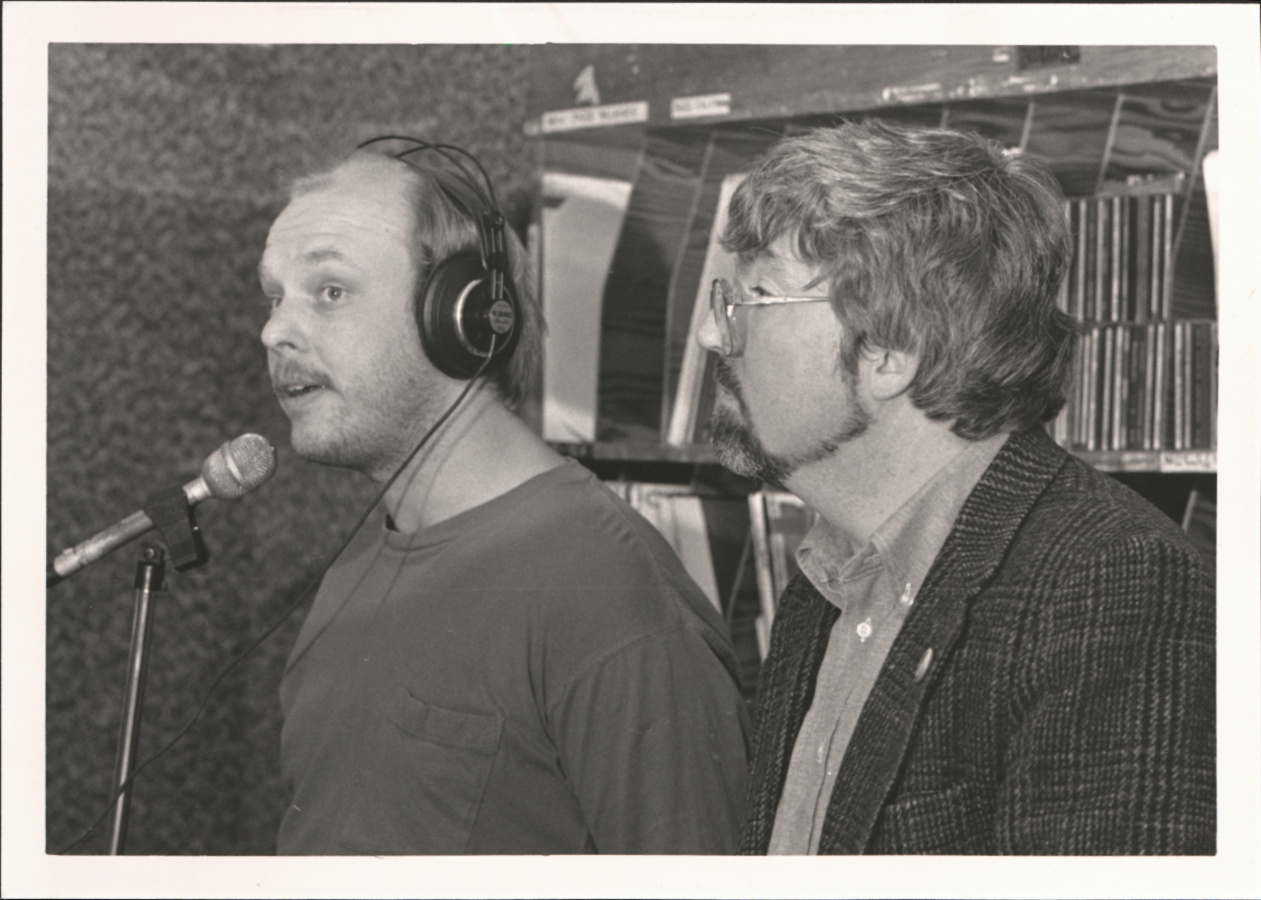
One long-running programming block, classical music, was being affected by a common occurrence for era-based radio at the time. The classical music library at WHUS had started to become worn with use and new CDs merely re-released old classical recordings, coupled with less student interest in classical music and other programming shifts. However, when Ita Kanter joined our forces in 1983, she reinvigorated the genre with her show Morning Classics.

And who could forget rock and metal? 1986 saw UConn’s first metal/”hard rock” show come to life. The first Hardrock Showcase was “Metal Madness” DJ Tim Yasui’s brainchild and was an effort to raise funds for our aging equipment and promote local rock bands. It featured five rising bands, including Yasui in his own band Voyeur and Joined Forces, a band who opened for Joan Jett and Van Halen… but why listen to me describe it?
Enjoy some excerpts from The Sound Mind, which acted as WHUS’ program guide and newsletter in the 1980s and 90s. It was released three times per year and includes the current schedule of music and public affairs shows, also featuring commentary on media regulation, record reviews, lists of Radiothon donors, and advertising from local businesses.

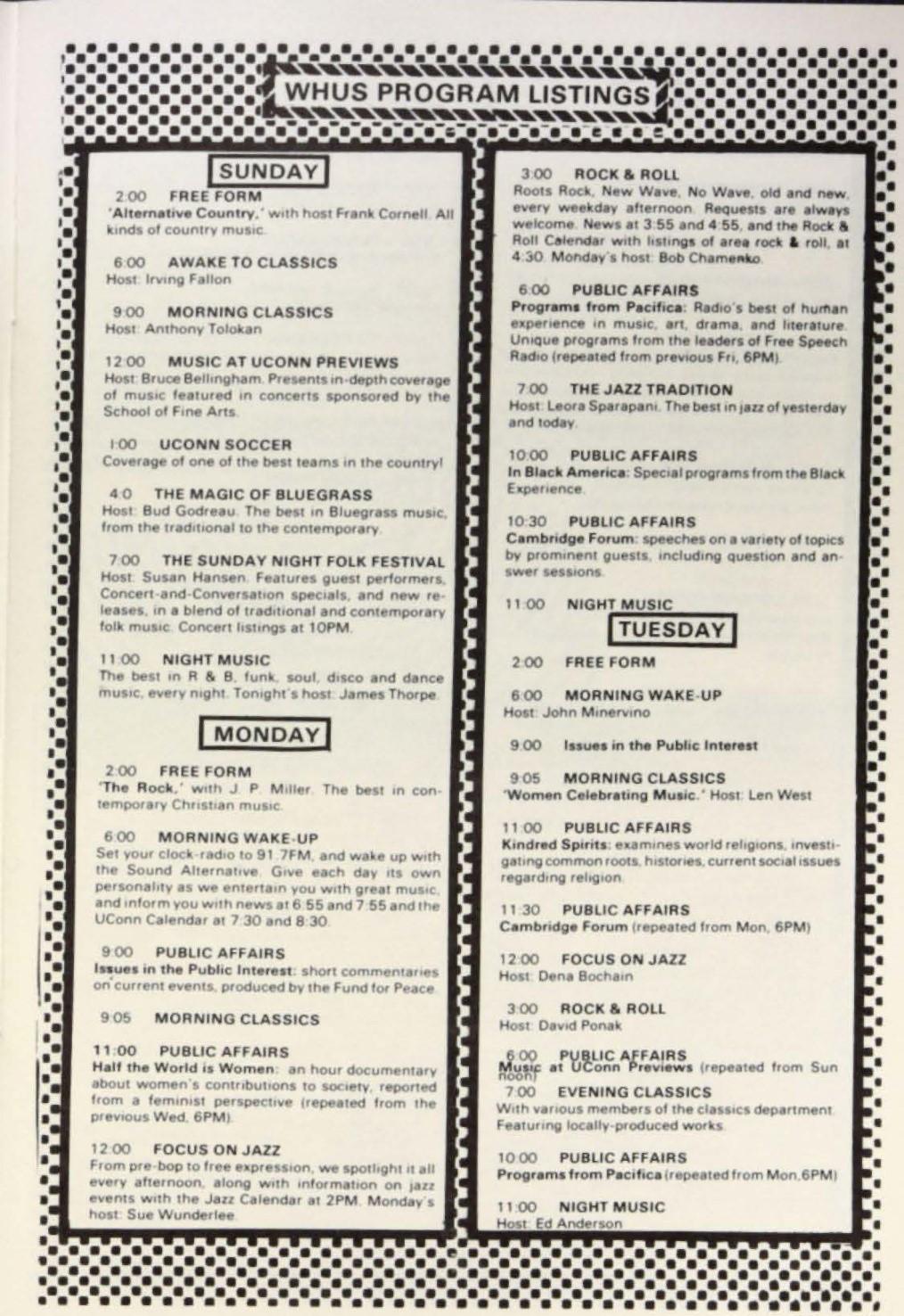
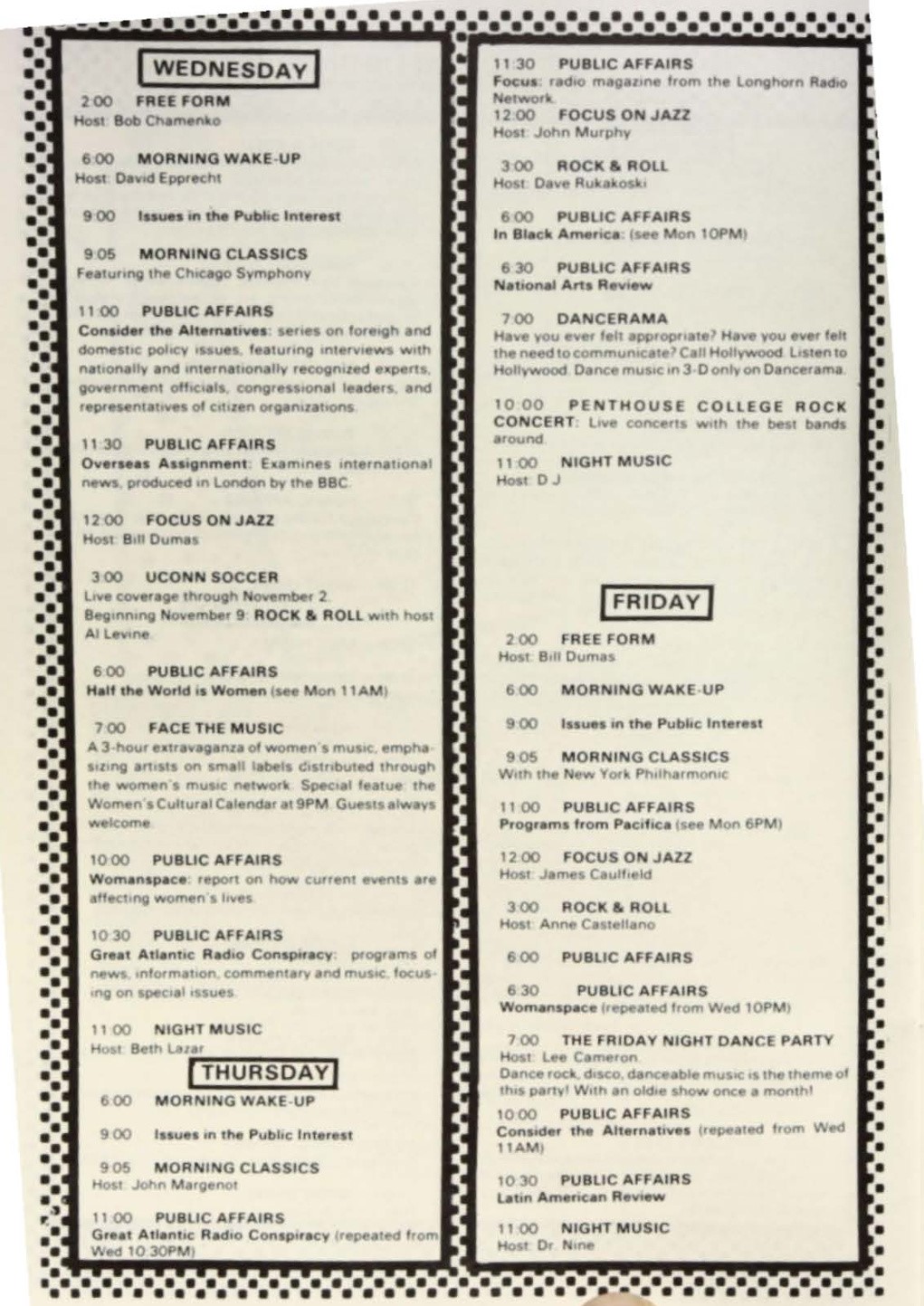
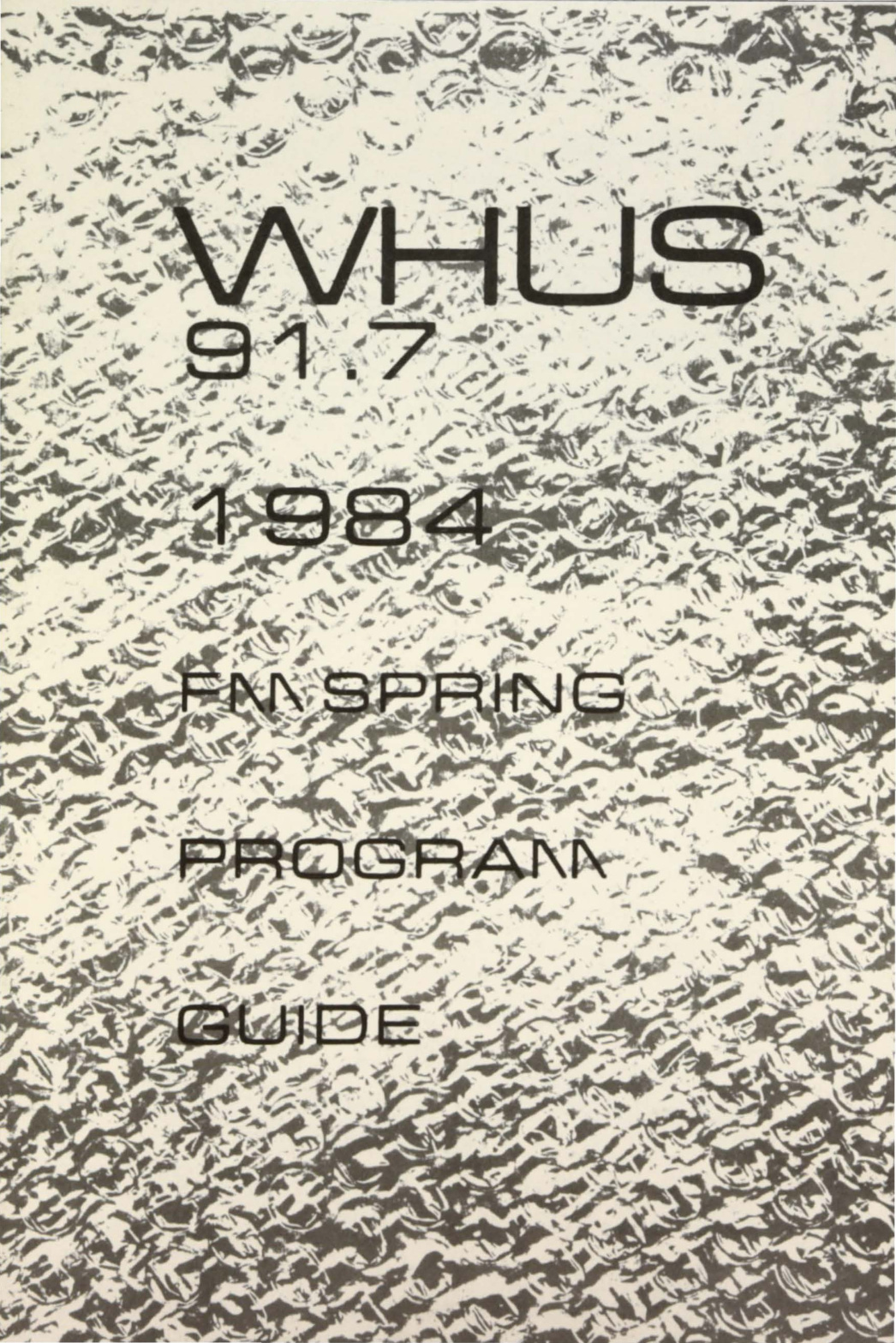
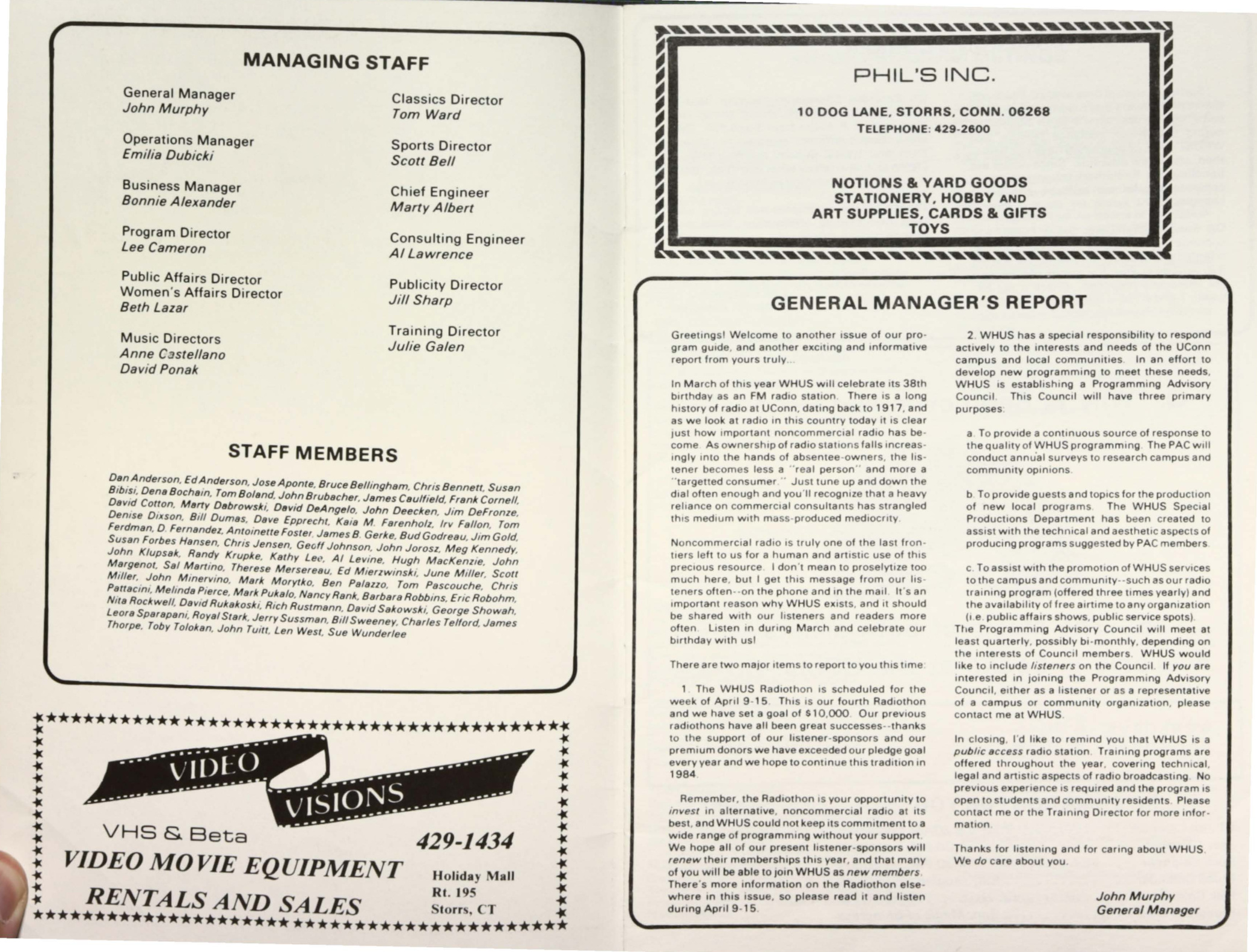

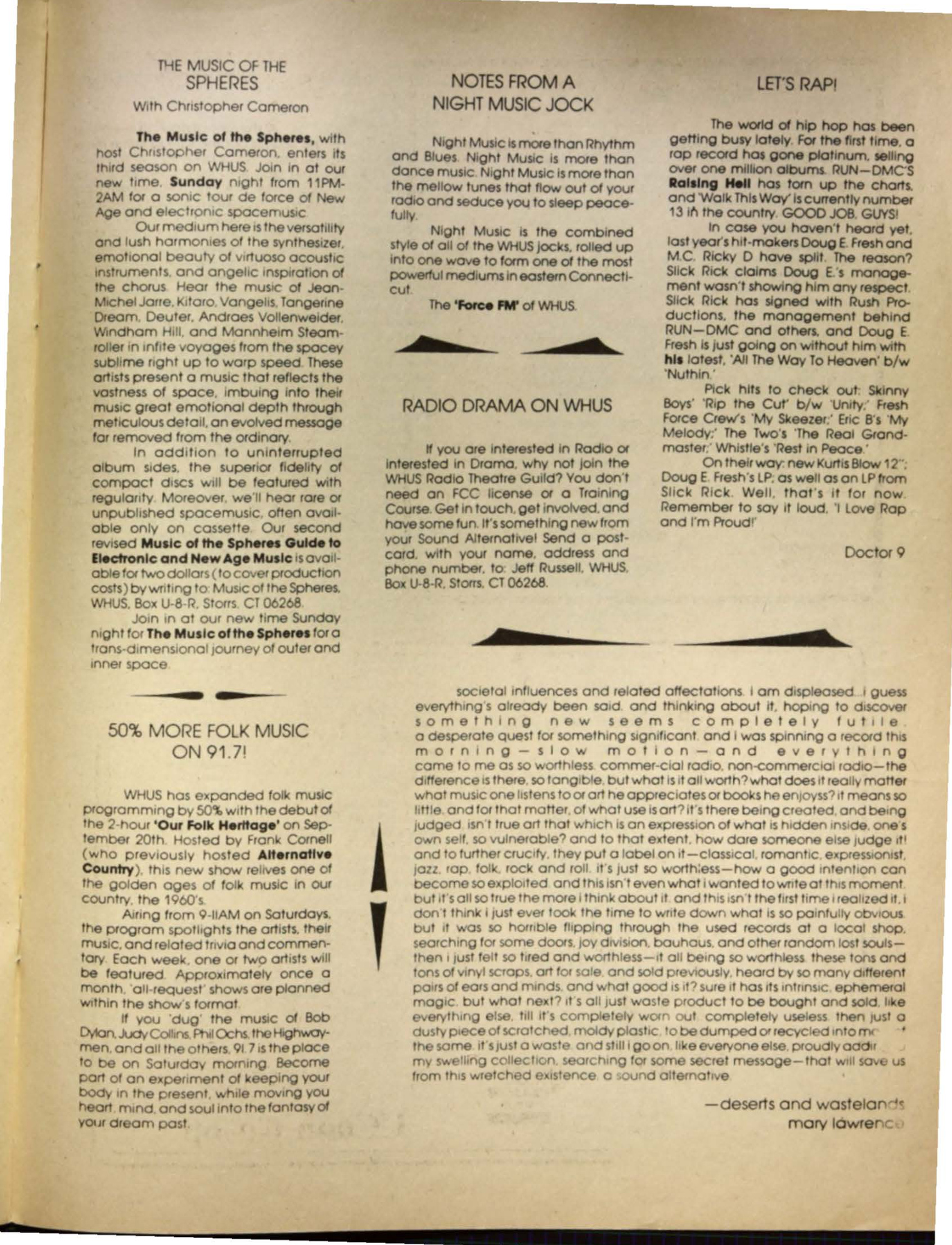
Early 1990s
Starting in 1988, WHUS began using a computer desktop publishing platform to help construct its program guide and other promotional materials. Blossoming as a tool to help distribute longer-form content, WHUS started publishing a magazine.
The Apple IIGS computer (GS standing for graphics and sound) and use of Aldus PageMaker software helped bring WHUS’ designs to life with a combination of clean text, bitmap graphics, and WYSIWYG (what you see is what you get) editing.

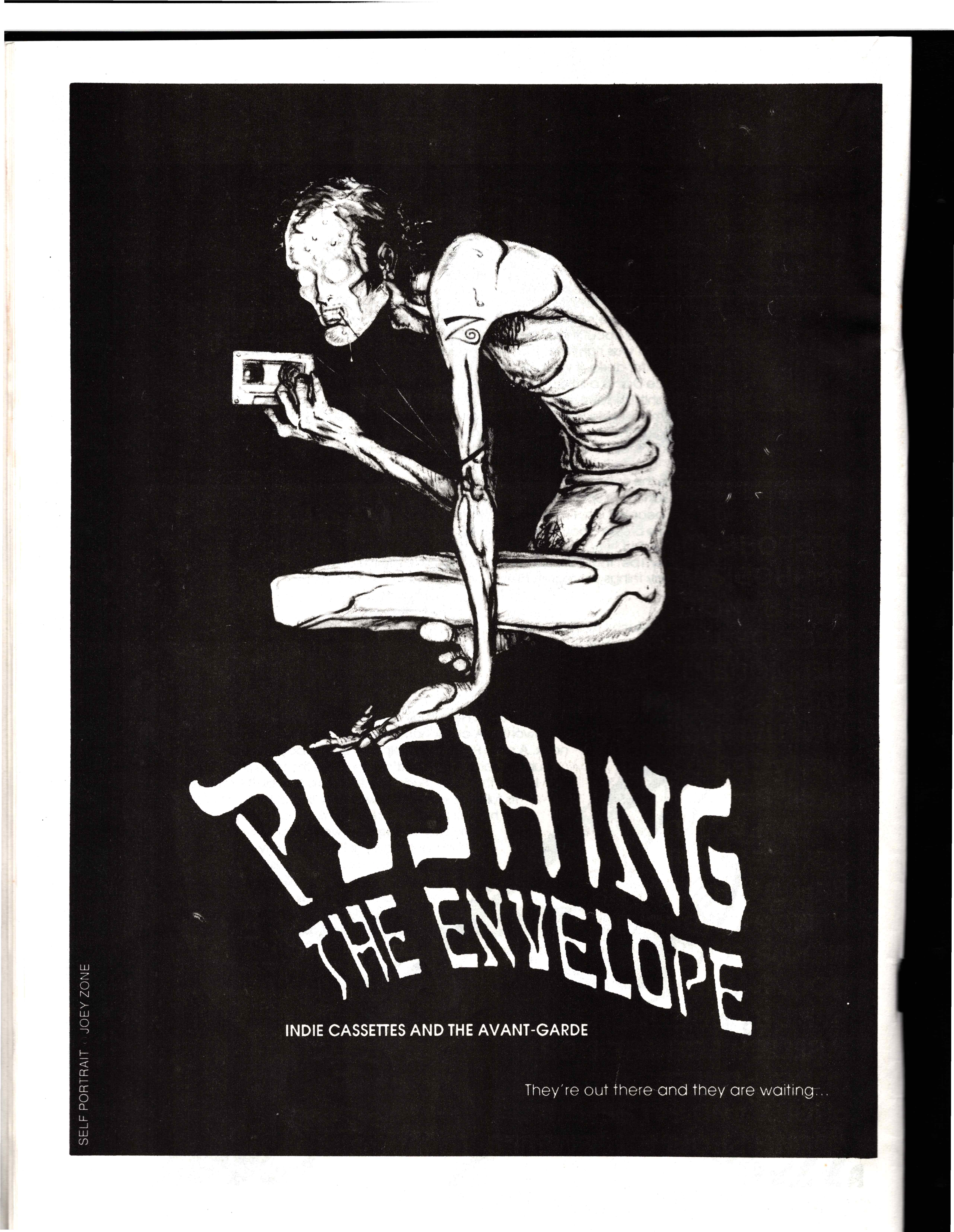


AUDIO
Richard Rustmann’s Tangled Up in Blues
Brian Albright and Andy Heidel’s Pseudo-Iguanas (alternate rock)
DOCUMENTS
Program Guides & Art
Spring 1981 Program Guide
Thumb: